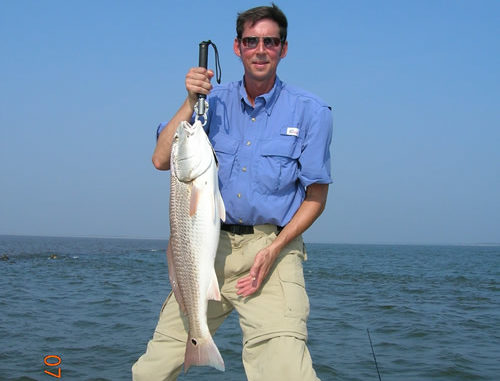
The good news for longtime fishing guide Gene Dickson is that he’s never had an easier time catching baitfish. The bad news is that the big redfish apparently are having an easy time of it, too. “We’ve got menhaden like nobody’s ever seen – giant schools of them, acres and acres of them,” Dickson said. “It’s kind of beyond anyone’s imagination as to how many there are.”
Dickson, who has been guiding out of the Georgetown area (www.deltaguideservice.com, 843-546-3645) for 25 years, said he’s been able to fill his bait tank with one toss of the cast net on a daily basis.
“Generally you can struggle to find live bait this time of year, but without fail I’ve been able to catch a tank full of menhaden before we get out of sight of the landing,” he said.
Dickson believes the abundance of menhaden has delayed the movement of “the really big reds” to jetties and other inshore areas.
“We think that may be part of the problem – there’s just so much food available for them that they’re not having to come in to their usual haunts looking for fish,” he said.
Not to fret. Dickson is convinced the bigger redfish will move inshore in coming weeks. And in the meantime, he and his clients are finding plenty of success by working the “sweet spots” up the rivers. These sweet spots are those areas where “there’s just enough fresh water and just enough salt water to suit them,” he said.
These areas will vary with the tides and flows along the quintet of rivers that finger the Georgetown County coastline – the Pee Dee, Waccamaw, Sampit, Black and Santee.
“The salt water has invaded way up the rivers, and the redfish tend to travel along with it,” Dickson said.
The redfish found up the rivers have tended to be of smaller size – generally 6 pounds or less – but providing plenty of action, with some days producing 15 to 20 catches.



Be the first to comment